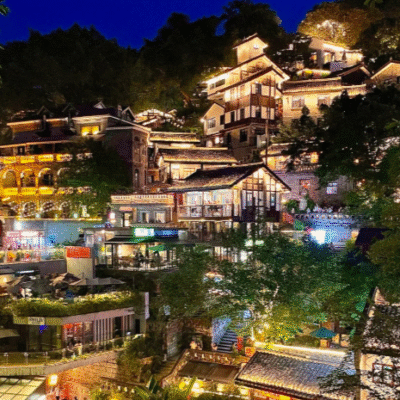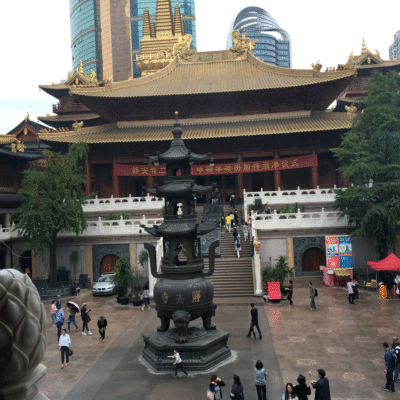Shanghai can be considered the most vibrant and prosperous city in China, bringing together all the highlights of a modern metropolis. If you are planning a trip to China, Shanghai is undoubtedly a destination you should not miss. In the following guide, I will show you how to explore this city with ease. With just a translation device and this guide, you will be ready to discover everything Shanghai has to offer.
How Much Is Your Budget for Traveling to Shanghai?
Based on local prices and the firsthand experiences of our colleagues living in Shanghai, we have compiled a relatively objective expense list. You can use this list to plan your own travel budget.
Shanghai Travel Budget Reference (7–10 Days)
| Budget Type | Accommodation (per night) | Food (per day) | Transportation (total) | Attractions | Estimated Total Cost (7–10 days) |
|---|---|---|---|---|---|
| Budget (Backpacker) | ¥150–300 (~$22–43) | ¥80–150 (~$12–22) | ¥200–400 (~$29–58) | Mainly free or low-cost sites | ¥2,000–3,500 (~$290–500) |
| ¥ |
This Shanghai free travel budget table has been carefully compiled by our team based on firsthand experience of living and traveling in Shanghai, combined with extensive information collection and analysis. We took into account local transportation, entrance fees, accommodation, and dining costs, and categorized them into three traveler types: backpackers, mid-range, and high-end. For the convenience of international visitors, we also converted the prices according to the exchange rates at the beginning of 2025, striving to provide accurate and objective guidance.
If you want more detailed travel guides, feel free to contact us.
Planning a Solo Trip to Shanghai on a Budget
First, you need to learn how to use China’s bus and subway systems, as these are the most affordable modes of transportation in the country, with surprisingly low fares. For example, the average bus fare in Shanghai costs just a few yuan. Below is the pricing information for Shanghai’s local buses.
Shanghai Bus Fare and Transit Pass Overview
| Transportation Type | Fare Description | Price Range | Notes |
|---|---|---|---|
| Regular City Bus Routes | Flat fare | ¥2 | Applies to most city bus routes |
| City Express Bus Routes | Starting fare ¥2, plus ¥1 for each additional distance segment | Starting at ¥2, increases by distance | Some express routes use distance-based fares |
| Integrated Transit Pass (3-day) | Unlimited rides on bus, subway, and ferry within 72 hours | ¥47.8 | Suitable for short-term frequent travelers |
| Integrated Transit Pass (7-day) | Unlimited rides on bus, subway, and ferry within 168 hours | ¥85.8 | Ideal for longer stays with frequent travel |
When using the bus, you should prepare a Shanghai bus route map in advance and choose the appropriate routes based on the locations of the attractions you want to visit. As a backpacker, it’s recommended to do thorough research before arriving in Shanghai to know which bus lines and route numbers correspond to your destinations. This will help you plan your trip more efficiently and smoothly.
Of course, if you want to save time, you can consider purchasing our travel guide (as shown in the table above), which includes detailed bus, subway routes, and attraction information for Shanghai, as well as recommended dining spots.
Shanghai Metro Ticket Costs Explained
Besides Shanghai’s buses, the metro is the second most affordable mode of transportation. Below is the fare information for the Shanghai metro, with prices listed in RMB.
| Fare Type | Price Range | Notes |
|---|---|---|
| Starting Fare | ¥3 | For trips within 0–6 km |
| Additional Fare | ¥1 per every 10 km | Increases based on travel distance |
| Maximum Fare | ¥15 | For the longest possible trip |
| One-Day Pass | ¥18 | Unlimited rides within 24 hours |
| Three-Day Pass | ¥45 | Unlimited rides within 72 hours |
| Maglev + Metro One-Day Pass | ¥55 | Includes single Maglev trip + unlimited metro rides within 24 hours |
Regarding how to use the metro and buses, you can refer to the following guide. Although it is based on Shenzhen’s distances, the methods of riding are the same.
Shenzhen Bus Guide: Essential Tips & 2025 Update
Shenzhen Metro Guide: Fares, Routes, Transfers & Travel Tips
Solving Your Accommodation Needs in Shanghai
If you are on a limited budget, it is recommended to stay in hostels or budget hotels. Accommodation in central areas of Shanghai (such as the Bund and Nanjing Road) is usually more expensive, ranging from $41–$60 per night. If you stay outside these popular districts, prices are more affordable, starting at around $20 per night.
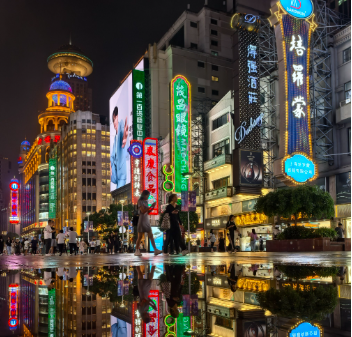
You can choose to stay away from popular tourist spots like the Bund and Nanjing Road while still living in nearby areas with convenient transportation. From there, it only takes a few subway stops or a short walk to reach the city center.
This way, you can save on accommodation costs while still having easy access to attractions. Recommended areas include the southern part of Huangpu District near People’s Square (just one subway stop from the Bund), the Nanjing West Road area in Jing’an District,
the area around South Shaanxi Road and Hengshan Road in Xuhui District, and finally Hongkou District near Sichuan North Road and Quyang Road.
How to Find Affordable Hotels in These Areas?
After arriving in Shanghai, we strongly recommend using local Chinese map apps such as Amap (高德地图) or Baidu Maps (百度地图) for navigation, since Google Maps has very limited functionality and outdated information in mainland China.
Simply enter the recommended areas into these apps, and you’ll be able to reach them easily via public transportation. We carefully selected these locations because they offer affordable hotels with good living conditions, making them excellent value for budget-conscious travelers.
| Area | Specific Locations | Type of Accommodation | Notes |
|---|---|---|---|
| Huangpu District (People’s Square area) | Huaihai Middle Road, Xujiahui Road area | Budget hotels, Business hotels | Many chain hotels, wide selection |
| Around People’s Square | Hostels | Suitable for budget backpackers | |
| Jing’an District (Nanjing West Road area) | Near Jing’an Temple, along Nanjing West Road | Budget and mid-range hotels | Busy commercial area, convenient |
| Alleys around Jing’an Temple | Hostels | Quiet area, some artsy hostels | |
| Luwan/Xuhui District | Hengshan Road, Jiashan Road, Shaanxi South Road | Boutique hostels, Budget hotels | Rich cultural atmosphere, good for artsy travelers |
| Hongkou District | Around Sichuan North Road commercial street | Economy chain hotels | Convenient transportation, affordable prices |
| Along Quyang Road and nearby alleys | Hostels | Mostly affordable hostels |
These places usually look like the example shown in the picture: the exterior may be simple, but the interior facilities are fairly standard. Back in my university days,

when my monthly budget was quite limited, I often chose accommodations like these. The experience was average, but the price was definitely affordable.
How to Communicate with Hotel Staff After Arrival?
When you go to these accommodations, you will notice that they are slightly different from regular hotels. Most of them do not have professional staff, so you are likely to encounter employees with limited experience.
Therefore, it is recommended that you familiarize yourself in advance with some of the things they might say, which will help make communication smoother.
| Question (English) | Purpose | Notes |
|---|---|---|
| Do you have a reservation? | Check booking status | Essential for check-in |
| Can I have your name, please? | Confirm guest identity | |
| What time will you check in? | Confirm check-in time | |
| What time will you check out? | Confirm check-out time | |
| Can I see your ID or passport? | Verify identity | |
| How would you like to pay? | Payment method | |
| Do you want to pay now or at checkout? | Payment timing | |
| How many people will be staying? | Confirm number of guests | |
| Do you need a single or double room? | Room type preference | |
| Do you need breakfast? | Additional service | |
| Would you like assistance with your luggage? | Extra help | |
| Do you know the Wi-Fi password? | Facility info | |
| Breakfast is served from 7 to 10 a.m. | Facility timing | Information statement |
In most cases, they will ask these questions. Once they know you are a foreigner, they usually won’t give you any trouble. You just need to say, “I’d like to rent a room, here is my passport,” and you can check in.
Recommended Dining for Backpackers in Shanghai
For backpackers, high-end restaurants are usually not the first choice. They tend to be expensive and often focus more on the atmosphere than the food itself, offering a poor balance between price and taste.
For budget-conscious travelers, it’s more suitable to choose affordable snacks and local specialty restaurants that offer better value for money. We recommend visiting food spots that have stood the test of time and are popular among locals.
Shanghai Snack Street
Snack streets are popular food hubs where almost everyone can find something they enjoy. Most of these stalls rely on small-scale operations for livelihood, and some are even run as part-time businesses.
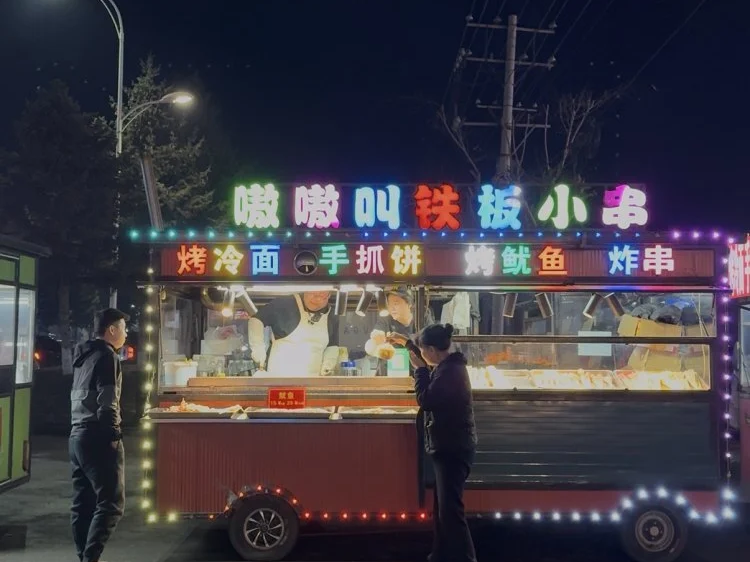
Recently, there was a news report in China about a doctor who, after finishing his shift, would go on to sell grilled squid. This phenomenon highlights the multiple roles some street food vendors play and their livelihood strategies.
Having multiple roles does not necessarily mean the food quality is poor or unsafe. In fact, most stalls prepare and sell food on-site, allowing customers to witness the entire cooking process. Compared to opaque kitchen environments, snack streets appear to offer more transparency and security. Moreover, if a stall’s food doesn’t meet the tastes of customers, it’s unlikely to survive in such competitive areas, as there are typically numerous other stalls around, and only the truly popular foods can thrive.
Based on this, we have compiled a list of some of the better snack streets in Shanghai. You can refer to the addresses in the table and use navigation to visit them.
| Food Landmark | Area | Features & Recommendations | Average Cost (approx.) |
|---|---|---|---|
| Yunnan Road Food Street | Huangpu District (near People’s Square) | One of Shanghai’s oldest food streets, gathering many long-established local eateries. Must-tries include Baizhan Chicken from Xiao Shaoxing and Pork Ribs Rice Cake from Xiande Lai. The historic shops make it an excellent place to experience traditional Shanghai flavors. | ¥40–100 (≈ $6–14) |
| Huanghe Road Food Street | Huangpu District (near People’s Square) | Popularized again by the TV series Blossoms, this street exudes 1990s retro vibes. It has both high-end restaurants and many affordable snacks. Try Jia Jia Tangbao’s crab soup xiaolongbao or find authentic scallion pancakes at street stalls. | ¥30–120 (≈ $4–17) |
| City God Temple / Yuyuan Bazaar | Huangpu District | Known as a “museum” of Shanghai snacks. Here, you can find almost all classic Shanghai treats, such as Nanxiang xiaolongbao, Ningbo glutinous rice balls, and various pastries. Although crowded with tourists, it’s very convenient to sample multiple authentic flavors in one visit. | ¥50–100 (≈ $7–14) |
| Wujiang Road Leisure Street | Jing’an District (near Nanjing West Road) | Renovated to be more modern and clean. Most famous is Xiao Yang Shengjian, known for its thin-skinned, juicy, soup-filled buns. The street also offers trendy snacks and beverage shops, popular with both tourists and locals. | ¥30–80 (≈ $4–11) |
We based these recommendations on the latest local reviews from Dianping and Xiaohongshu, combined with our team’s on-site experiences. All the above spots are well-known and still operating.
For example, searching “Huanghe Road food” on Xiaohongshu will reveal numerous real posts sharing the Blossoms TV series–style culinary experiences. These places are not only popular with tourists but are also frequented by locals, ensuring their authenticity.
Some Must-See Places in Shanghai
Although Shanghai may not have as many tourist attractions as Beijing or Xi’an, its main sights and cultural treasures are definitely worth visiting. Exploring these places will allow you to truly experience the city’s history and vibrant energy.
| Attraction | Admission | Suggested Duration | Address | How to Get There |
|---|---|---|---|---|
| The Bund (外滩) | Free | 1–2 hrs | Zhongshan East 1st Rd, Huangpu District | Metro Line 2/10 to Nanjing East Road Station |
| Yu Garden (豫园) | Peak ¥40, Off-peak ¥30 | 2–3 hrs | 168 Fuyou Rd, Huangpu District | Metro Line 10/14 to Yu Garden Station |
| Tianzifang (田子坊) | Free | 2–3 hrs | 210 Taikang Rd, Huangpu District | Metro Line 9 to Dapuqiao Station |
| Shanghai Museum (上海博物馆) | Free (reservation required) | 2–4 hrs | 201 People’s Ave, Huangpu District | Metro Line 1/2/8 to People’s Square Station |
| Xintiandi (新天地) | Free | 1–2 hrs | 181 Taicang Ln, Huangpu District | Metro Line 1/10/13 to Xintiandi Station |
| Lujiazui (陆家嘴) | Free (observation deck paid) | 1–2 hrs | Century Avenue, Pudong New Area | Metro Line 2 to Lujiazui Station |
| Shanghai Disneyland (上海迪士尼乐园) | Variable (from ¥475) | Full day | 310 Huangzhao Rd, Chuansha New Town, Pudong | Metro Line 11 to Disneyland Station |
| Jing’an Temple (静安寺) | ¥50 | 1–1.5 hrs | 1686 Nanjing West Rd, Jing’an District | Metro Line 2/7 to Jing’an Temple Station |
The Bund (外滩)
The Bund is Shanghai’s iconic symbol. On one side of the Huangpu River, you’ll find a “museum” of international architecture styles—Gothic, Romanesque, Baroque, and more—witnessing over a century of Shanghai’s history. On the other side lies the Lujiazui skyline, with landmarks like the Oriental Pearl Tower and Shanghai Tower, representing modern China.
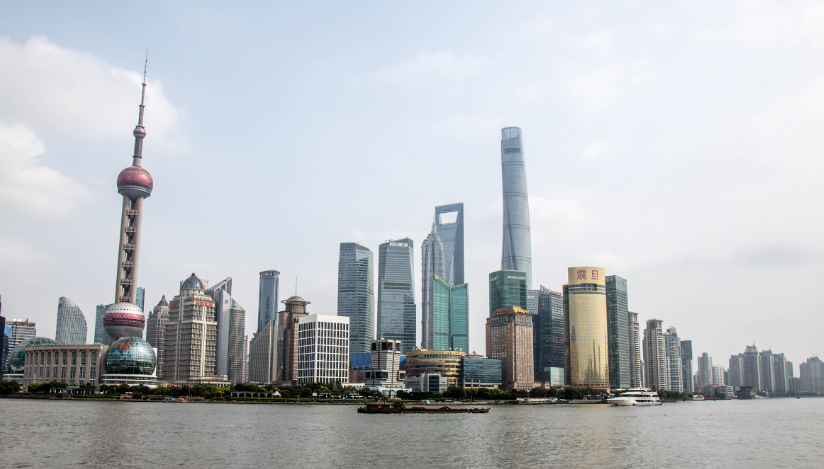
Tip: Visit around dusk when the lights start to come on; the view is spectacular. Walk along the riverside promenade from south to north to experience the blend of history and modernity. Be aware that it can get very crowded during holidays.
Transport: Metro Line 2 or 10 to Nanjing East Road Station, then ~10 minutes walk.
Admission: Free
Yu Garden & City God Temple (豫园与城隍庙):Old Shanghai Charm
Yu Garden is a nationally protected historical site, widely recognized for its rich history and cultural value. This exquisite classical Jiangnan garden features elegant pavilions, towers, rockeries, and ponds, showcasing the refined aesthetics of Chinese gardens.
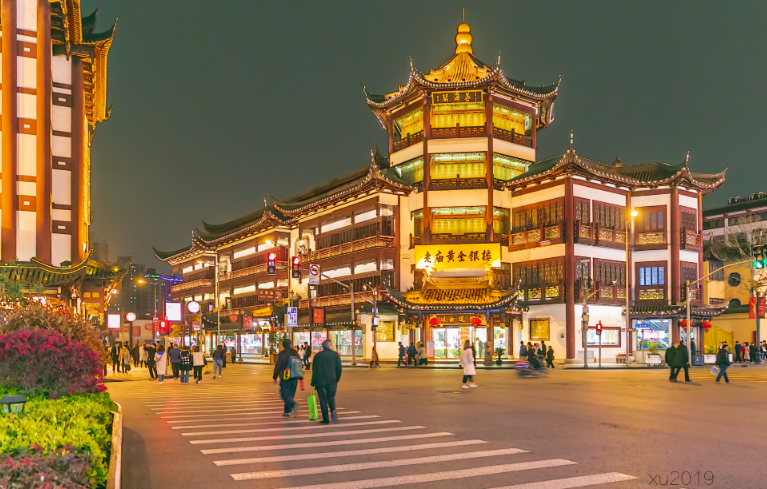
Outside the garden, the City God Temple commercial area is a bustling market filled with street food vendors and souvenir shops. It’s lively and full of local flavor.
Tip: The famous Nanxiang Steamed Bun Shop often has long queues. As an alternative, you can try other local snacks nearby, such as crab soup xiaolongbao or pan-fried buns, which are equally authentic. This area is an excellent spot to experience traditional Shanghai street food.
Tianzifang (田子坊)
Tianzifang is a creative arts district transformed from Shanghai’s unique Shikumen architecture. Its narrow alleys are like a maze, but around every corner, you may find delightful surprises—independent designer shops, quirky cafés, and handcrafted workshops.
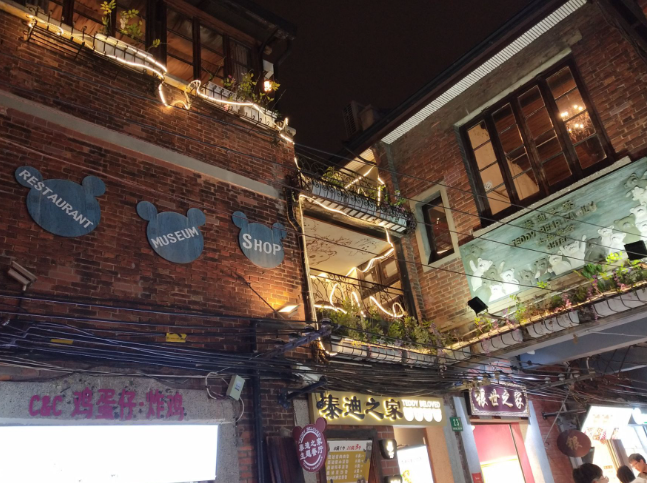
Tip: Visit on a weekday afternoon when there are fewer tourists, allowing you to explore the alleys at a leisurely pace. Shops change frequently, so each visit can bring new discoveries. Unlike Xintiandi, Tianzifang retains more of the original residential life and is less commercialized.
Transport: Metro Line 9 to Dapuqiao Station, exit directly into the area.
Shanghai Museum (上海博物馆)
Shanghai Museum is one of China’s four major museums. If you are interested in ancient Chinese art, this is a must-visit. Its collection exceeds 1 million artifacts, with bronze, ceramics, calligraphy, and paintings as the main highlights.
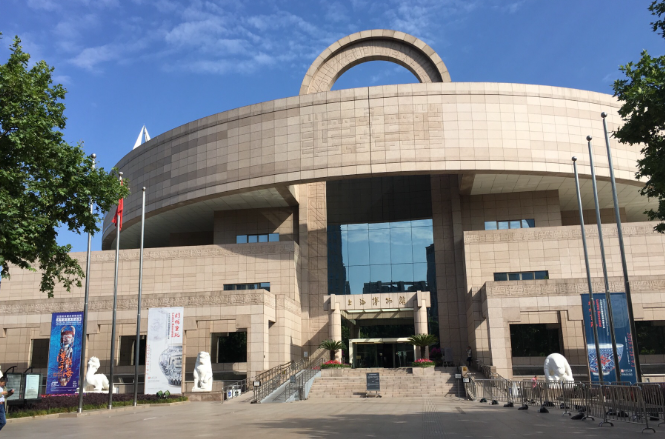
Tip: Admission is free, but advance reservation through the official website is required. Plan at least half a day for your visit.
Website: Shanghai Museum
Other Attractions to Consider
- Xintiandi (新天地):Shikumen Reimagined
Xintiandi is a trendy landmark that creatively blends Shanghai’s Shikumen architecture with modern bars, restaurants, and boutiques. The historic buildings retain blue bricks, red tiles, and stone doorframes, while the interiors have been modernized.
Backpacker Tip: Dining here can be expensive. Evening strolls are highly recommended to admire the architecture and enjoy the night scenery. Window shopping is fun and free.
Transport: 181 Taicang Lane, Huangpu District; Metro Lines 1, 10, or 13 to Xintiandi Station. - Lujiazui (陆家嘴):Experience the Skyscrapers
Shanghai’s financial hub, home to landmarks like the Oriental Pearl Tower, Shanghai Tower, and Shanghai World Financial Center.
Backpacker Tip: Observatory tickets are costly (~¥180+). A cheaper option is the pedestrian skybridge near Lujiazui Station, which offers a 360° view of the skyscrapers—free and equally impressive. Excellent for cityscape photography.
Transport: Century Avenue, Pudong; Metro Line 2 to Lujiazui Station. - Shanghai Disneyland (上海迪士尼乐园):A Full-Day Magical Adventure
China’s first Disneyland park, featuring unique attractions and Chinese-inspired designs.
Backpacker Tip: Ticket prices start around ¥475 and a full day is required. If budget or time is limited, it may not be the top choice. For theme park enthusiasts or those seeking a unique cultural blend, it’s worth considering. Plan your visit via the official app and purchase early-bird tickets to save.
Transport: 310 Huangzhao Road, Chuansha New Town, Pudong; Metro Line 11 to Disneyland Station. - Jing’an Temple (静安寺):An Oasis Amidst the City
Located in the bustling Nanjing West Road area, the temple’s golden rooftops contrast beautifully with surrounding skyscrapers. This historic Buddhist temple truly embodies “a hidden gem in the city.”
Backpacker Tip: Entry fee is ¥50. Worth visiting if you’re interested in Buddhist culture or want a moment of tranquility. The temple’s architecture is magnificent and perfect for photography.
Transport: 1686 Nanjing West Road, Jing’an District; Metro Line 2 or 7 to Jing’an Temple Station.
3-Day Classic Itinerary for Backpackers in Shanghai
For budget-conscious travelers with limited time, we’ve designed a high-value 3-day itinerary connecting Shanghai’s key attractions.
| Day | Morning | Afternoon | Evening | Dining Suggestions |
|---|---|---|---|---|
| Day 1 | Shanghai Museum (Free, reservation required) | People’s Square & Nanjing Road Walking Street (Free) | The Bund (Free) | Lunch at Yunnan Road Food Street; Dinner at Huanghe Road Food Street for local snacks |
| Day 2 | Yu Garden & City God Temple (Admission required) | Tianzifang (Free) | Xintiandi (Experience nightlife; window shopping possible) | Try xiaolongbao, shengjian buns at City God Temple; Dinner at a local restaurant near Tianzifang |
| Day 3 | Jing’an Temple (Admission required) | Explore French Concession (Wukang Rd, Anfu Rd, Free) | Lujiazui (View Oriental Pearl Tower from outside, Free) | Street-side eateries near Jing’an Temple or French Concession to experience local life |
Practical Tips
- Internet & Navigation: Google Maps and some online services may be limited in mainland China. Prepare a VPN beforehand or download local map apps such as Amap (Gaode) or Baidu Maps. Local SIM cards are available at airports or service shops.
- Mobile Payments: Alipay and WeChat Pay dominate the payment scene. International credit cards can now be linked to use these apps—setup in advance is recommended.
- Language: Shanghai is international, and English is generally understood in major attractions and commercial areas. Learning basic Mandarin phrases like “你好 (Nǐ hǎo)”, “谢谢 (Xièxiè)”, and “多少钱 (Duōshǎo qián)” can make your trip smoother.
Conclusion
Shanghai is a city full of endless possibilities, where history and the future intersect, and East meets West. Whether admiring the skyline from the Bund or savoring a steaming bowl of local dumplings in a narrow lane, you’ll discover the city’s unique charm.
We hope this guide provides practical assistance to make your Shanghai journey smoother and richer. Most importantly, keep a curious heart and discover your own Shanghai story. Enjoy your trip!
Information Sources & Traceability
All key information in this guide comes from official websites, our team’s field investigations, and long-term experience living in Shanghai. Budget and price details are based on early 2025 market conditions and are regularly reviewed. Our aim is to provide the most authentic, objective, and practical travel advice.


